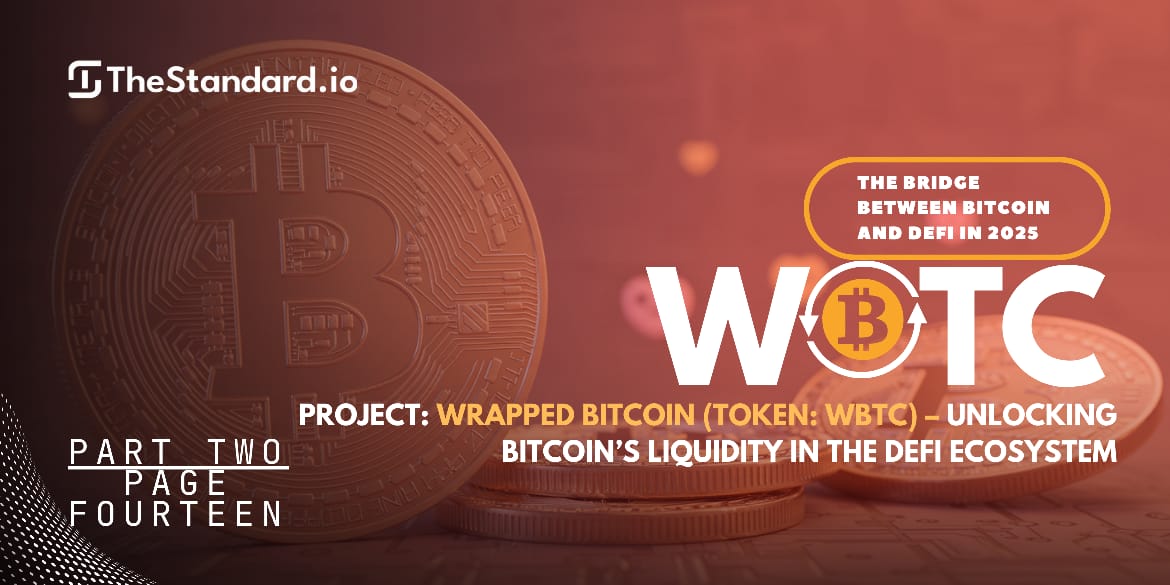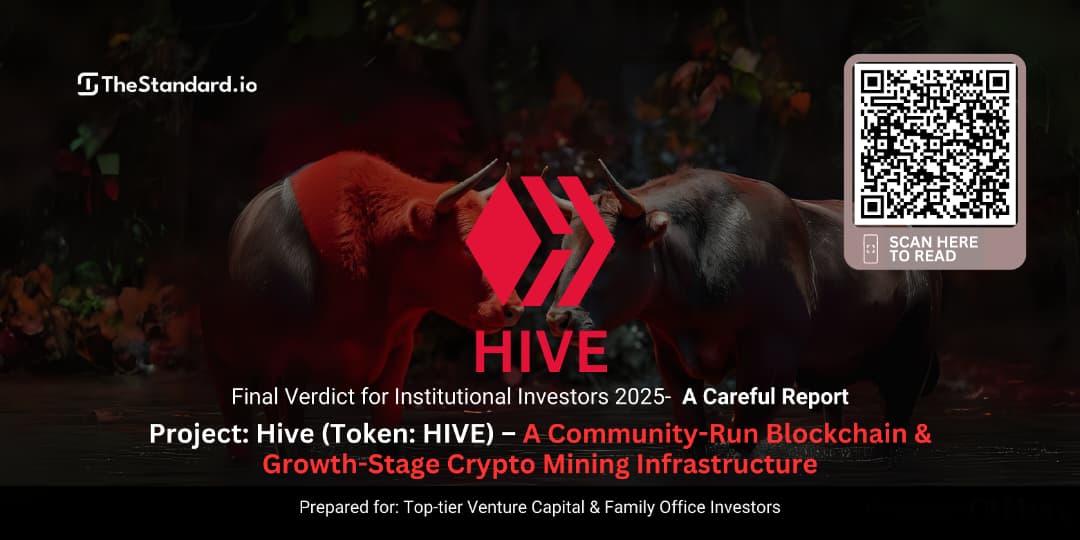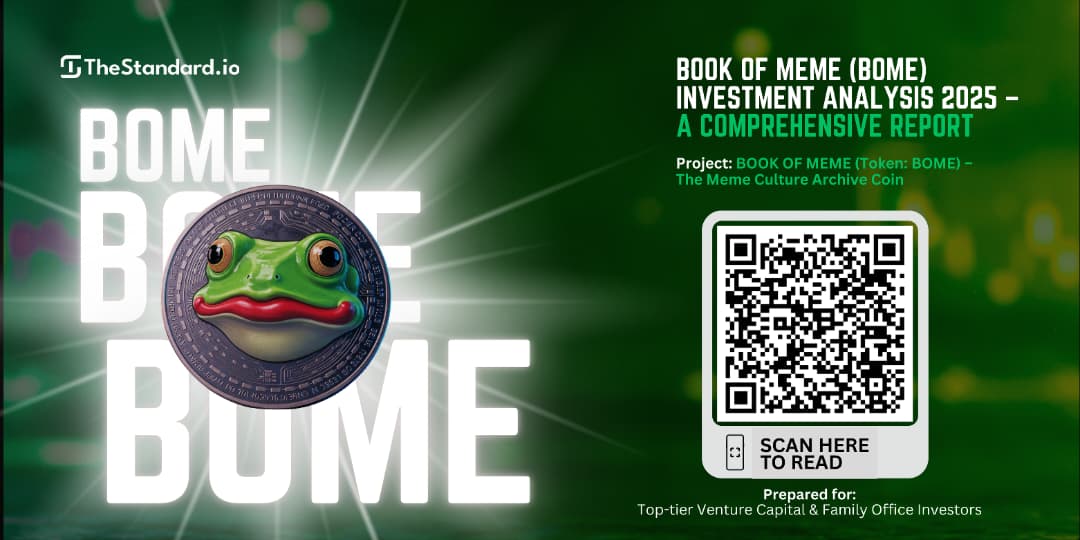Wrapped Bitcoin (WBTC): The Bridge Between Bitcoin and DeFi in 2025 / Part 2

Part 2 / Page 14
9B. Developer Activity and Ecosystem Growth
The growth and adoption of WBTC can be largely attributed to the developer activity within the Ethereum ecosystem and the broader Bitcoin community. As an open-source project, WBTC thrives due to contributions from a global network of developers, who continuously improve its codebase, integrate new features, and enhance its security.
Open-Source Development and Collaboration
WBTC benefits from the open-source contributions of many talented developers. Its code is hosted on GitHub, where developers from around the world can propose changes, submit pull requests, and review the project’s smart contracts. WBTC’s GitHub repository serves as a collaborative space where developers can identify potential bugs, propose improvements, and discuss upgrades. By keeping the project open-source, WBTC fosters a collaborative development environment where improvements can be implemented swiftly and efficiently (source: WBTC GitHub Repository, WBTC GitHub).
The community-driven development model has allowed WBTC to scale and improve rapidly, especially as it became a core component of the DeFi ecosystem. The ability to mint and redeem WBTC tokens seamlessly between Bitcoin and Ethereum has created an ecosystem where developers can build and expand on the core protocol to create new use cases for WBTC. This flexibility has allowed WBTC to integrate into numerous DeFi platforms and to support the growing demand for Bitcoin-backed assets within Ethereum’s decentralized financial ecosystem.
WBTC’s Role in DeFi
The primary role of WBTC in the DeFi ecosystem is its function as a Bitcoin-backed collateral asset in Ethereum-based applications. This function has led to WBTC’s widespread adoption by major DeFi platforms such as MakerDAO, Aave, and Compound, among others. By providing Bitcoin liquidity on the Ethereum network, WBTC enables Bitcoin holders to participate in Ethereum-based financial products without giving up exposure to Bitcoin’s price movements (source: WBTC and DeFi Adoption, Aave WBTC).
The DeFi ecosystem’s rapid growth has been a driving factor in WBTC’s expansion. As WBTC becomes more widely used in DeFi protocols, it attracts even more developers to contribute to its growth and integration. For example, WBTC’s adoption in lending platforms like Aave and Compound has made it easier for Bitcoin holders to earn interest on their holdings while still maintaining their Bitcoin exposure. Furthermore, WBTC is used as collateral in decentralized exchanges (DEXs), enabling users to swap WBTC for other cryptocurrencies in a decentralized manner.
Key sources:
9C. Community Engagement and Social Sentiment
Community engagement is crucial to the success of WBTC. A healthy, active, and engaged community ensures that the project remains relevant and adaptable as it evolves. For WBTC, this engagement occurs primarily through social media channels, community governance, and open-source collaboration.
Engagement through Social Media
Social media platforms like Twitter, Reddit, and Telegram are key channels for community engagement. These platforms are often where WBTC holders, DeFi users, and developers share their thoughts, ask questions, and discuss the future of the project. For example, WBTC regularly posts updates, educational content, and news on Twitter, where it has garnered significant attention from the DeFi community (source: WBTC Twitter Discussion, WBTC Twitter).
Reddit also plays an essential role in fostering community engagement, particularly within DeFi-related subreddits. Discussions on r/DeFi often touch on the use of WBTC in lending, liquidity mining, and Bitcoin’s role in DeFi. These discussions help raise awareness about WBTC’s utility and foster collaboration among users, developers, and DeFi enthusiasts.
The WBTC Telegram channel is another space where users can engage directly with WBTC merchants, developers, and other community members. These platforms offer a real-time, interactive space for users to get updates and answers to their questions, keeping them engaged with the project’s ongoing development.
Social Sentiment and Governance Participation
The WBTC DAO provides an opportunity for users to participate directly in governance, proposing updates and voting on protocol decisions. This level of engagement ensures that the WBTC protocol continues to grow in line with the needs and desires of the DeFi community. Community-driven proposals, such as the integration of Chainlink oracles for proof-of-reserves, show the collaborative nature of WBTC’s development (source: WBTC Community Governance, WBTC Governance).
Key sources:
9D. Ecosystem Support by External Entities
The growth of WBTC has been supported by several external entities, both within the blockchain and DeFi ecosystems. WBTC’s adoption as a key asset within Ethereum-based DeFi platforms has played a crucial role in its widespread success.
DeFi Protocol Adoption
One of the primary contributors to WBTC’s success is its integration into leading DeFi platforms like MakerDAO, Aave, Compound, and Uniswap. These protocols utilize WBTC as a collateral asset, providing Bitcoin holders with a way to participate in Ethereum-based financial systems without sacrificing their Bitcoin holdings. By supporting WBTC, these platforms help provide liquidity to the DeFi ecosystem, enabling WBTC holders to earn interest, borrow assets, or trade on decentralized exchanges (source: DeFi Pulse WBTC Usage, DeFi Pulse).
Strategic Partnerships
Beyond DeFi protocols, WBTC has also formed strategic partnerships with key blockchain entities like Chainlink. These partnerships have enabled WBTC to maintain its proof-of-reserves mechanism and ensure that the project remains secure and transparent. The integration with Chainlink’s decentralized oracles allows WBTC to continuously update its reserves in a secure and tamper-proof manner, building trust within the DeFi ecosystem (source: Chainlink Proof of Reserves, Chainlink).
Key sources:
9E. Conclusion (Community and Ecosystem)
WBTC has emerged as a cornerstone of the DeFi ecosystem, serving as a bridge between Bitcoin and Ethereum. Through its decentralized governance model, active developer contributions, and engaged community, WBTC continues to grow in importance and utility within the DeFi landscape. The support from external partners and DeFi platforms has enabled WBTC to maintain its relevance as a Bitcoin-backed token within Ethereum-based decentralized finance.
The WBTC DAO fosters a community-driven governance model that ensures WBTC remains responsive to market needs, technological changes, and user feedback. As the DeFi ecosystem grows and Bitcoin’s role within Ethereum-based financial products continues to expand, WBTC will likely continue to serve as a critical Bitcoin bridge to the Ethereum network, with community participation playing a central role in shaping its future.
Key sources:
10. Exit Strategy & Liquidity Considerations
10A. Token Unlock Schedule Recap
The token unlock schedule refers to the planned release of tokens, particularly for early investors, team members, and VCs, as part of a vesting or distribution strategy. However, Wrapped Bitcoin (WBTC) operates in a fundamentally different manner compared to traditional tokenized projects due to its unique Bitcoin-backed structure. Unlike other DeFi projects that issue tokens in stages or on set schedules, WBTC operates with a 1:1 backing to Bitcoin, meaning there is no centralized pre-mined token pool or token distribution that requires a lockup schedule. Instead, WBTC's circulating supply is tied directly to Bitcoin reserves, which are held by trusted custodians such as BitGo, Kyber Network, and Ren Protocol.
Minting and Redeeming Process
For WBTC, there is no typical ICO lockup period. Instead, the process of minting and redeeming WBTC tokens determines the total circulating supply. When users deposit Bitcoin into a WBTC merchant's vault, such as BitGo, they receive the equivalent amount of WBTC tokens on the Ethereum blockchain. Conversely, when users decide to redeem WBTC, they burn the tokens and receive the equivalent amount of Bitcoin in return.
This process is distinct from traditional tokens because it ensures that there are no artificially imposed unlock schedules or vesting periods. The number of WBTC tokens in circulation is instead determined by the demand for Bitcoin exposure within the Ethereum ecosystem. As a result, there are no early investor unlock periods or substantial token dumps that typically occur with traditional token releases (source: WBTC Minting and Redemption, WBTC Network).
Examples of Other DeFi Tokens with Traditional Unlock Schedules
In contrast to WBTC, most DeFi tokens such as Aave (AAVE), Uniswap (UNI), and Compound (COMP) implement vesting schedules for their tokens. These schedules often range from one to four years, during which the tokens are gradually released to team members, investors, and advisors. These release periods can have a significant impact on the market's supply and demand, potentially causing price volatility when large batches of tokens are unlocked. This is not a concern for WBTC, as its supply is directly tied to the Bitcoin reserves, ensuring market stability and transparent backing (source: Aave Token Unlocks, Aave, Uniswap Token Vesting, Uniswap Docs).
Furthermore, WBTC’s fee structure provides ongoing revenue for the project through minting and redeeming fees, which enables it to sustain operations without requiring new token issuance. This revenue is used to cover costs such as custodial fees, security audits, and proof-of-reserves maintenance, ensuring that WBTC can operate efficiently and transparently without reliance on external token sales or VC funding.
Key sources:
10B. Investor/Team Sell Behavior
The sell behavior of WBTC investors and team members differs substantially from typical tokenized projects, primarily due to the nature of its 1:1 backing with Bitcoin. In the case of WBTC, holders are incentivized to use the token in the DeFi ecosystem, rather than selling it on secondary markets. WBTC serves as a bridge between Bitcoin and Ethereum, allowing users to borrow, lend, provide liquidity, and participate in yield farming, all while retaining their Bitcoin exposure.
WBTC’s Use as Collateral in DeFi
WBTC is widely used in DeFi platforms like MakerDAO, Aave, and Compound, where it is used as collateral to mint DAI, borrow stablecoins, or provide liquidity in liquidity pools. Since WBTC represents Bitcoin on the Ethereum blockchain, investors can use it to earn interest or fees while keeping their Bitcoin exposure intact. WBTC holders in DeFi protocols typically prefer to use their tokens rather than sell them, as they can earn yields in the form of interest and transaction fees (source: WBTC DeFi Usage, DeFi Pulse).
VC and Team Sell Behavior
Although WBTC does not have traditional vesting schedules like many other tokens, the founders and early investors still play an important role in market behavior. BitGo, Kyber Network, and Ren Protocol, which are the companies behind WBTC, have substantial control over the custodial process and the liquidity of WBTC in the DeFi space. However, since WBTC’s value is directly tied to Bitcoin, team members are more likely to hold WBTC tokens in liquidity pools or as collateral, rather than selling them for profit (source: Kyber Network and WBTC, Kyber Network).
Given that WBTC tokens are backed 1:1 by Bitcoin, the decision to redeem WBTC is often driven by market sentiment and the individual needs of holders, rather than large-scale sell-offs. If Bitcoin’s price surges or if Bitcoin exposure is highly sought after, more users will likely redeem their WBTC for Bitcoin, but this process is always balanced by the demand for WBTC in DeFi protocols, which creates a natural supply-demand equilibrium.
Key sources:
10C. Secondary Market Liquidity
The liquidity of WBTC in the secondary market is a key factor for its success and usability within DeFi protocols. WBTC is an ERC-20 token, meaning it can be traded on both decentralized exchanges (DEXs) like Uniswap and SushiSwap, as well as centralized exchanges (CEXs) like Coinbase, Kraken, and Binance.
Liquidity on Decentralized Exchanges
Uniswap, one of the largest DEXs, facilitates seamless trading of WBTC against other Ethereum-based assets, such as ETH and DAI. The trading pairs involving WBTC and ETH on Uniswap help provide liquidity for WBTC, enabling traders to exchange Bitcoin exposure for Ethereum assets easily (source: Uniswap WBTC Trading, Uniswap). WBTC is also integrated into SushiSwap, which also offers liquidity pools for WBTC and ETH. These liquidity pools create a natural flow of WBTC tokens, with users providing liquidity and earning fees for facilitating trades.
Moreover, WBTC is listed on major CEXs, ensuring high liquidity across platforms. Binance and Coinbase allow users to buy, sell, and trade WBTC directly, increasing its liquidity and market access. Since WBTC is pegged 1:1 to Bitcoin, its price will always closely mirror Bitcoin’s price, ensuring that it remains a stable asset within the crypto ecosystem (source: WBTC Trading on Coinbase, Coinbase).
WBTC and Bitcoin Liquidity
As WBTC is directly backed by Bitcoin reserves, the liquidity of WBTC in the market is directly tied to Bitcoin’s liquidity. The ability to redeem WBTC for Bitcoin means that users can liquidate their holdings at any time, providing a seamless exit for investors. This feature ensures that WBTC always has sufficient liquidity for redemption, even if the market fluctuates or if Bitcoin’s price changes. This model sets WBTC apart from many other DeFi tokens, as it gives users the ability to exit their position without worrying about liquidity or slippage.
Key sources:
Thank you for taking the time to read this article. We invite you to explore more content on our blog for additional insights and information.
https://www.thestandard.io/blog
"If you have any comments, questions, or suggestions, please do not hesitate to reach out to us at [ https://discord.gg/K72hed6FRE ]. We appreciate your feedback and look forward to hearing from you."
CLICK HERE TO CONTINUE
PART 2 / PAGE 15: www.thestandard.io/blog/wrapped-bitcoin-wbtc-the-bridge-between-bitcoin-and-defi-in-2025-part-2-15
6 of the best crypto wallets out there
Vulputate adipiscing in lacus dignissim aliquet sit viverra sed etiam risus nascetur libero ornare non scelerisque est eu faucibus est pretium commodo quisque facilisi dolor enim egestas vel gravida condimentum congue ultricies venenatis aliquet sit.
- Id at nisl nisl in massa ornare tempus purus pretium ullamcorper cursus
- Arcu ac eu lacus ut porttitor egesta pulvinar litum suspendisse turpis commodo
- Dignissim hendrerit sit sollicitudin nam iaculis quis ac malesuada pretium in
- Sed elementum at at ultricies pellentesque scelerisque elit non eleifend
How to choose the right wallet for your cryptos?
Aliquet sit viverra sed etiam risus nascetur libero ornare non scelerisque est eu faucibus est pretium commodo quisque facilisi dolor enim egestas vel gravida condimentum congue ultricies venenatis aliquet sit quisque quis nibh consequat.

How to ensure the wallet you’re choosing is actually secure?
Integer in id netus magnis facilisis pretium aliquet posuere ipsum arcu viverra et id congue risus ullamcorper eu morbi proin tincidunt blandit tellus in interdum mauris vel ipsum et purus urna gravida bibendum dis senectus eu facilisis pellentesque.
What is the difference from an online wallet vs. a cold wallet?
Integer in id netus magnis facilisis pretium aliquet posuere ipsum arcu viverra et id congue risus ullamcorper eu morbi proin tincidunt blandit tellus in interdum mauris vel ipsum et purus urna gravida bibendum dis senectus eu facilisis pellentesque diam et magna parturient sed. Ultricies blandit a urna eu volutpat morbi lacus.
- At at tincidunt eget sagittis cursus vel dictum amet tortor id elementum
- Mauris aliquet faucibus iaculis dui vitae ullamco
- Gravida mi dolor volutpat et vitae lacus habitasse fames at tempus
- Tellus turpis ut neque amet arcu nunc interdum pretium eu fermentum
“Sed eu suscipit varius vestibulum consectetur ullamcorper tincidunt sagittis bibendum id at ut ornare”
Please share with us what is your favorite wallet using #DeFiShow
Tellus a ultrices feugiat morbi massa et ut id viverra egestas sed varius scelerisque risus nunc vitae diam consequat aliquam neque. Odio duis eget faucibus posuere egestas suspendisse id ut tristique cras ullamcorper nulla iaculis condimentum vitae in facilisis id augue sit ipsum faucibus ut eros cras turpis a risus consectetur amet et mi erat sodales non leo.

Subscribe to our newsletter.
Get the latest alpha from us, and the Chainlink build program in an easy-to-read digest with only the best info for the insider.
It's an easy one-click unsub, but I bet you won't; the info is just too good.

Try the future of borrowing today.
Don't wait. It's easy to open a free smart vault
then start earning a yield and borrowing today.
0xf5A27E55C748bCDdBfeA5477CB9Ae924f0f7fd2e
USDs Contract on Arbitrum:
0x2Ea0bE86990E8Dac0D09e4316Bb92086F304622d










